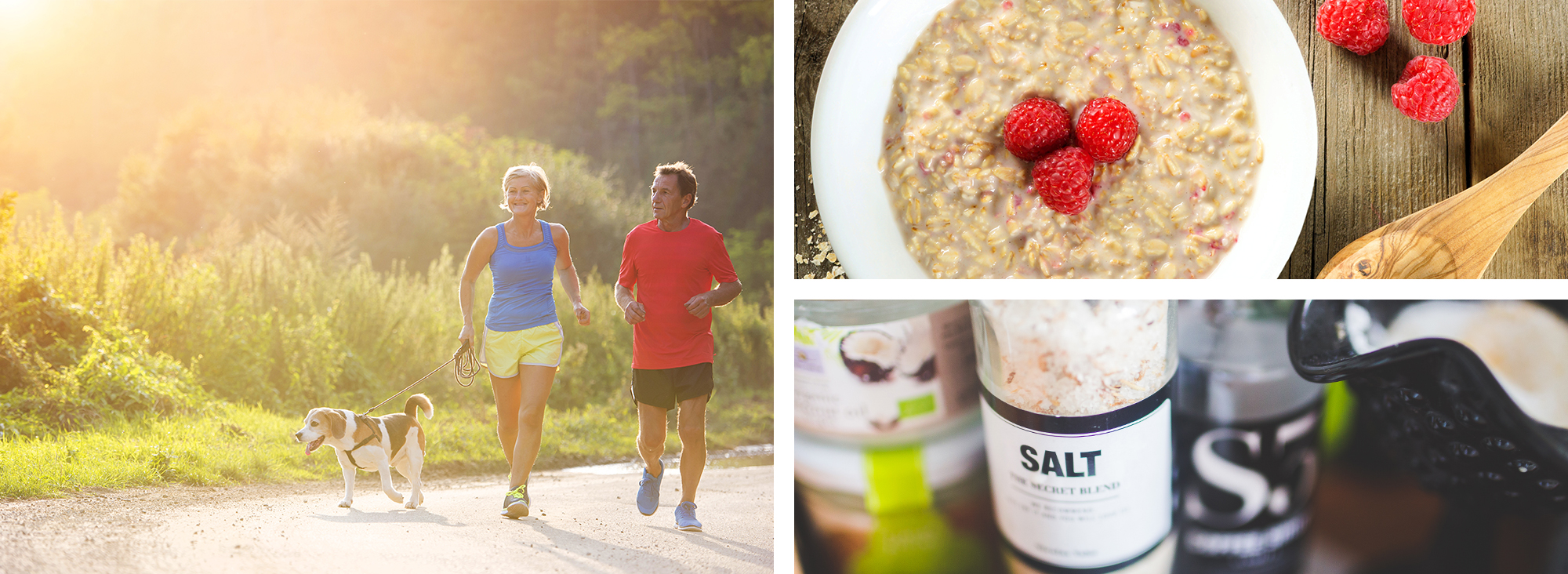As part of our philosophy at Motivate Health, we like to bring you the newest research. But it is important to pair new findings with what you already know to discover what works best on your unique journey to wellbeing. Here is a look at three recent studies, gathered from Useful Science, and a few ways to apply these ideas in everyday living.
A recent study surveyed 18 individuals with a healthy weight and, conversely, 18 participants who were overweight. The team examined how breakfast choice (oatmeal or cornflakes) affected overall fullness and lunchtime food intake about three hours later. The researchers measured blood glucose levels as well as hormone levels of insulin and acetaminophen absorption to trace gastric emptying. They learned that the overweight individuals who had oatmeal for breakfast reported feeling the most full and consumed the smallest lunches, even compared to the healthy weight participants.
Have oatmeal in the morning. There are several ways to prepare oatmeal. Experiment and see what keeps you feeling full the longest. Try adding a fruit (e.g., apple) or even a vegetable (e.g., pumpkin) to your oatmeal for further health benefits. We know the powerful influence that produce has on our total wellbeing, but a study has shown that increased fruit and vegetable intake also supports healthy weight management over the long term. Here is a resource to get started: www.eatthis.com/overnight-oat-recipes-for-weight-loss.
Researchers set out to see if the sodium content in food has an impact on overall food consumption. The team studied 48 healthy adults between the ages of 18 and 54. The participants ate elbow macaroni noodles with one of several sauces. The researchers prepared different sauces, including low-fat/low-salt, low-fat/high-salt and other combinations to determine if fat content and/or sodium content affected food consumption. After eating the meal, participants ranked the overall pleasantness of the food and their overall hunger or fullness, and the researchers examined how much food was consumed. What they learned is that salt in food may lead to overconsumption for healthy adults but fat content did not play a big role. Considering the many health risks tied to a high-sodium diet, see if you can reduce your overall intake.
Reduce your overall sodium intake. There are many different ways to flavor your food – sodium doesn’t have to be part of the mix. (But if you do enjoy a little salt here and there, it’s easy to reduce the amount.) Try seasoning your meals with fresh or dried herbs and spices, such as basil, black pepper, rosemary and others. Another way to reduce sodium is to rinse any canned products, such as beans, with water in a strainer before cooking with them. Here are some additional ways to reduce your overall sodium intake: http://healthfinder.gov/healthtopics/category/health-conditions-and-diseases/heart-health/eat-less-sodium-quick-tips.
Walkers who changed their pace during a stroll burned more calories than those who walked at a constant speed. A recent study measured how impactful walking speed is on how your body burns energy (calories). The researchers used two formulas (models) to determine the correlation of walking speed and energy metabolism: a model that focused on energy fluctuations and a model that focused on pendulum walking. They found that average, healthy adults exhibited a higher metabolic rate (the rate at which energy is used) when they varied their walking pace.
Fluctuate your walking pace when you step outside, or adjust your treadmill settings to oscillating speeds. It is natural to walk at varying speeds. Consciously alternate your walking pace to get your heart rate pumping. Listen to your body, though, and don’t try to walk too fast; avoid injury. Here is a resource to help you get started: www.berkeleywellness.com/fitness/exercise/article/speed-your-walking.
On your path to total wellbeing, it is important to remember to listen to your body. Experiment with different ideas and suggestions to find what works well for you. A solution for others isn’t always the best fit for you.
Sources
http://www.webmd.com/food-recipes/quick-tips-adding-fruits-and-vegetables-to-your-diet-get-started
http://journals.plos.org/plosmedicine/article?id=10.1371/journal.pmed.1001878
http://www.eatthis.com/overnight-oat-recipes-for-weight-loss
http://www.hsph.harvard.edu/nutritionsource/salt-and-sodium/sodium-health-risks-and-disease/
http://healthfinder.gov/healthtopics/category/health-conditions-and-diseases/heart-health/eat-less-sodium-quick-tips
http://jn.nutrition.org/content/146/4/838
http://rsbl.royalsocietypublishing.org/content/11/9/20150486
http://www.berkeleywellness.com/fitness/exercise/article/speed-your-walking

